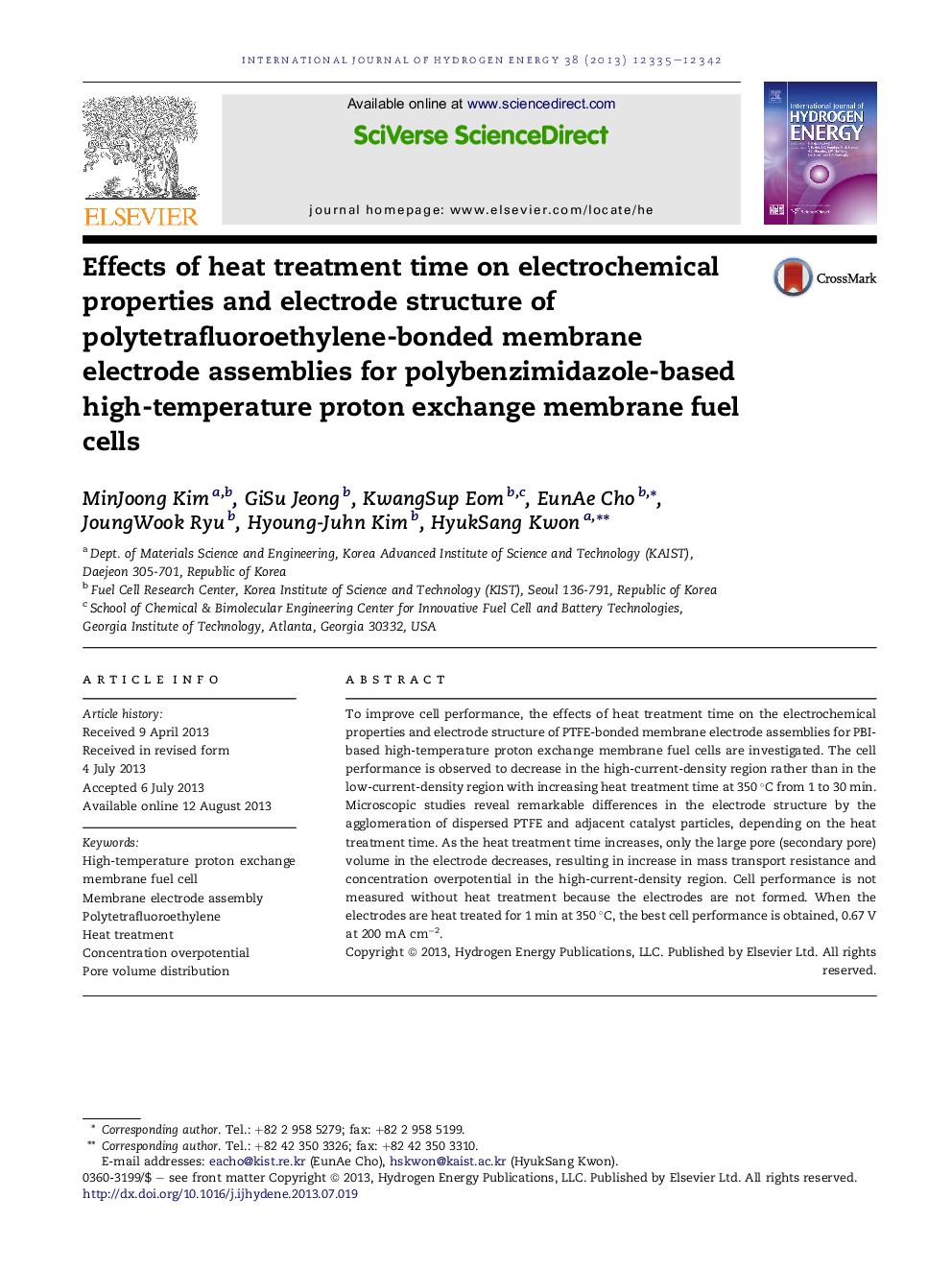| کد مقاله | کد نشریه | سال انتشار | مقاله انگلیسی | نسخه تمام متن |
|---|---|---|---|---|
| 1281463 | 1497517 | 2013 | 8 صفحه PDF | دانلود رایگان |

• Cell performance decreases with increasing heat treatment time.
• Concentration overpotential mainly affects decrease in cell performance.
• Microscopic studies show agglomeration of dispersed PTFE and catalysts.
• It causes decrease in the secondary pore volume which acts as gas channel.
• Dispersal of PTFE limits cell performance with respect to gas transport.
To improve cell performance, the effects of heat treatment time on the electrochemical properties and electrode structure of PTFE-bonded membrane electrode assemblies for PBI-based high-temperature proton exchange membrane fuel cells are investigated. The cell performance is observed to decrease in the high-current-density region rather than in the low-current-density region with increasing heat treatment time at 350 °C from 1 to 30 min. Microscopic studies reveal remarkable differences in the electrode structure by the agglomeration of dispersed PTFE and adjacent catalyst particles, depending on the heat treatment time. As the heat treatment time increases, only the large pore (secondary pore) volume in the electrode decreases, resulting in increase in mass transport resistance and concentration overpotential in the high-current-density region. Cell performance is not measured without heat treatment because the electrodes are not formed. When the electrodes are heat treated for 1 min at 350 °C, the best cell performance is obtained, 0.67 V at 200 mA cm−2.
Journal: International Journal of Hydrogen Energy - Volume 38, Issue 28, 19 September 2013, Pages 12335–12342